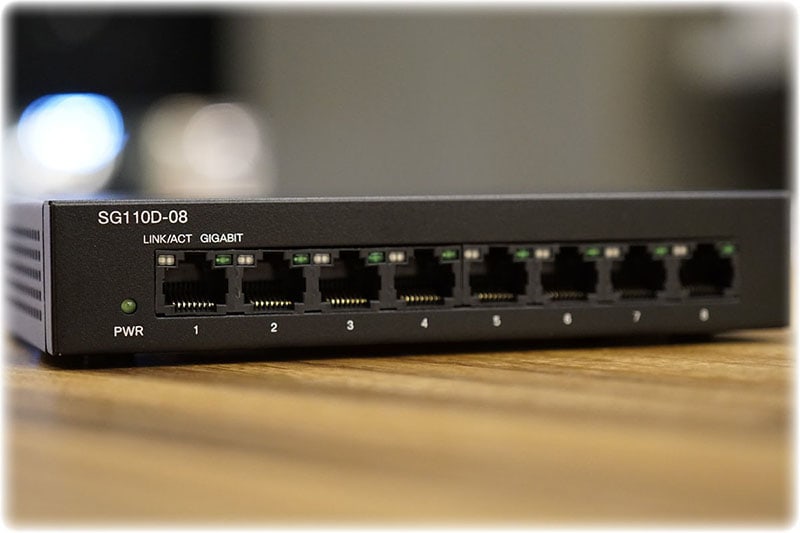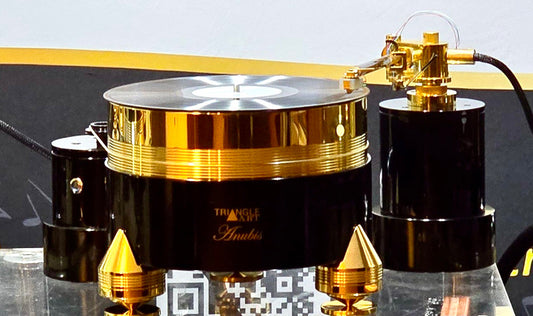
I’ve been involved in digital music streaming for around eight or nine years now, but have only truly taken a really deep dive in the last few years. Recently, I’ve had the good fortune to evaluate several exceptionally good turnkey streaming setups, including the Euphony Summus Server/endpoint system that is the cornerstone of my home system. But my initial involvement with digital audio was more as a tinkerer, and there’s a whole cottage industry of home-brew designs (mostly based on Intel NUC or Raspberry PI configurations) out there. At almost ten years into this voyage, my personal experience tells me that the DIY route is not for the faint-of-heart. Dealing with the hardware configurations isn’t horrific, it’s mainly the buggy, mind-numbingly stressful DLNA or UPnP open source software implementations needed to create a working music server. Trust me, I’ve been there, done that!
And along the way, some of the most useful hacks and hardware ancillaries intended to elevate the performance of digital music streaming have seemed to elude me, for whatever reason. One of them involves my current subject, which is employing a Gigabit Ethernet media converter setup in combination with my digital streaming system. I’d been reading about the ease of incorporating one for probably nearly four years now, but for whatever reason, my interest had never been taken to the next level, until just last week, when I caved and spent the $90 necessary to make it happen, at my local Micro Center. And although my previous goal for setting up an Ethernet to fiber conversion scheme was strictly to improve sound quality, that’s recently been augmented by another, previously unknown (to me, at least) rationale for this setup. That is, to implement complete protection of your Ethernet-connected equipment from network-related lightning damage, which can be an extremely vexing problem in any audio setup.
Home Ethernet equipment and cabling can easily introduce unacceptable levels of digital noise into your playback environment. For me, that was initially the big selling point of ethernet to fiber conversion – lowering the noise floor. At the point several years ago when my digital streaming experience had begun to step up to the next level, I still was pretty much oblivious to the need for outboard improvements. Part of my lack of enthusiasm for optical conversion had to do with my perception of optical in general, which was mainly focused around the popular Toslink optical connection. Yes, Toslink is optical, but it has limited bandwidth, which limits its usefulness with uncompressed digital audio signals, and it’s widely considered, by those in the know, to be the very last choice for digital audio connections.
 The Sonore Signature Rendu SE is one of the few optically-equipped digital streamers that currently exists.
The Sonore Signature Rendu SE is one of the few optically-equipped digital streamers that currently exists.The Sonore Signature Optical Rendu…and the Fidelizer EtherStream Network Switch
I had the pleasure to review the Sonore Signature Optical Rendu SE a couple of years ago, a device that had a built-in multi-mode optical digital input. The unit came supplied with a Gigabit Ethernet media converter, which took the incoming copper cable Ethernet signal and converted it to a multi-mode optical signal. That plugged directly from the media converter, via a multi-mode optical cable, into the Signature Optical Rendu. Sonore touted this connection as being audibly superior, and I couldn’t argue with that based on my evaluation – the resulting sound had a level of transparency and clarity that simply blew me away with its goodness. At the time, that optical connection was the single biggest improvement in digital streaming I’d yet experienced – the Sonore was a digital streaming dream system, without a doubt. I feel pretty certain that systems like the Sonore, with its built-in optical capabilities, are the streamers of the not-too-distant future. But for whatever reason, units with built-in optical ports are few and far between on the current market. By having the optical capability built into the unit, you’re bypassing an entire conversion stage, which ultimately should be a good thing.
Another aspect of optimizing the Sonore setup was that Adrian Lebena (Sonore’s head honcho) insisted that the media converter should be powered by a linear power supply rather than a wall wart. I happened to have an Uptone Audio UltraCap LPS-1 on hand that matched the voltage requirement for their supplied media converter, and it worked perfectly. My experiences with linear power supplies have definitely shown me that using one can significantly enhance the performance of the attached equipment. The LPS-1 in combination with Sonore’s optical module proved to me that Adrian was correct when he insisted that noise from a substandard power supply could degrade the sound of the Signature Optical Rendu. Also, in my recent online explorations of fiber media conversion, where dual converters are employed, I’ve found numerous references to the importance of providing a good power supply to the media converter that’s nearest to your audio stack. The media converter at the beginning of the run is ahead of the fiber cable implementation, so no noise from it can move to the second converter – the optical cable is impervious to electrical noise of any kind.
 The UpTone Audio LPS series of linear power supplies provide an excellent source of stable power to fiber media converters.
The UpTone Audio LPS series of linear power supplies provide an excellent source of stable power to fiber media converters.Despite this positive experience, and for whatever reason, my brain didn’t completely latch onto the whole Ethernet-to-optical conversion concept. Days after the Sonore unit left my system and returned to the manufacturer, I received a new EtherStream network switch from Fidelizer. This takes a top-of-the-line Cisco switch and replaces many of the interior circuit board parts with an upgraded selection of capacitors and resistors, and an improved power supply. Yeah, I know, a switch is a switch, right? That’s not what my ears told me – the EtherStream definitely lifted my streaming experience to a level that came within an eyelash of the goodness of the optical setup with the Signature Optical Rendu. And, when used in combination with my Ethernet-connected Sonore UltraRendu, offered surprisingly good sound. The EtherStream stayed in my system for over a year, and I didn’t spend too much time bemoaning the loss of the Sonore Signature Optical unit. Especially after the Euphony Summus system showed up!
The $400 EtherStream ended up getting returned to the manufacturer about the same time as I experienced my system failure in August, and I replaced it with a $40 managed Ethernet switch. I didn’t think too much at the time about the impact of the new switch on my sound quality, as my system was essentially limping along for months. But when I got the system back up and running again in mid-November, I immediately felt it sounded…less perfect than it did with the EtherStream in place. That’s the point when I really started thinking hard about possibly finally going the fiber media conversion route.
Gigabit Ethernet Media Converters – the Basic Concept
The concept of incorporating a Gigabit media converter revolves around taking the noise-prone copper-wired Ethernet connection and converting it to an optical signal. One media converter unit is required to convert the incoming signal from Ethernet to optical. An optical cable is then connected to the media converter, which in turn connects to a second media converter. The network signal then gets reconverted from optical back to Ethernet. The advantage to this setup is that once the Ethernet signal has been converted to optical, this completely eliminates any electrical noise from the signal path. At the endpoint of the setup, a small length of network cable then connects to the Ethernet port of the second media converter, and in turn to your streaming equipment. The network cable should be as short as possible, so that it won’t act as an antenna for any RF signals that might get attracted by a longer cable. A number of configurations are possible in a Gigabit media conversion setup, and those configurations run a broad range of prices. Mine is at the low end of the spectrum, but you could easily spend several hundred dollars (or more) to accomplish the same thing.
 TP Link's entry level Gigabit Ethernet Media Converter is an excellent performer despite its low price.
TP Link's entry level Gigabit Ethernet Media Converter is an excellent performer despite its low price. Ubiquiti's 1G multi-mode SFP modules are top-rated performers.
Ubiquiti's 1G multi-mode SFP modules are top-rated performers.The SFP transceiver is a module that plugs into a media converter and facilitates the conversion from Ethernet to fiber optic. SFP transceivers are available in both single- and multi-mode configurations, and have varying speed capabilities. So, if you decide to go with a media converter that only includes an SFP cage input (they’re more common), you’ll need to choose an SFP transceiver module that matches the capabilities of the media converter. As with media converters, pricing for SFP units is all over the place. You’ll need a pair of them, but you can easily pay as much for a single transceiver as I paid for my entire setup!
 Micro Connectors' multi mode optical cables are capable of 10G speed performance.
Micro Connectors' multi mode optical cables are capable of 10G speed performance.The only remaining necessary item is a good optical digital cable that matches either the single- or multi-mode setup of your system. The good news is that optical cables tend to all be 10 GbE-capable, so should you decide to later upgrade your system speed (10 GbE and other standards are becoming available), your cabling will already be compatible with your new system. And the length of the cable isn’t important here – it can be 1 meter, or 10 meters, whatever length is necessary to make the setup work in your system. However, it’s definitely preferable to use a longer optical cable and a very short Ethernet cable on the end with the audio equipment.
My Gigabit Media Converter Setup
I obtained everything for this project at my local Micro Center. The pair of TP Link media converters I chose retail for $25 each, and are very similar in design, capabilities, and price to many I’ve seen in online discussions of implementing this process. They’re definitely baseline units, with an SFP cage input that requires the purchase of an SFP transceiver module. The pair of 1 Gigabit, multi-mode SFP transceivers that I chose are manufactured by Ubiquiti, and despite the low $22 price for the pair, they get very high marks for their build quality and functionality. And for $18, the 3-meter Micro Connectors multi-mode optical cable I selected for connecting the SFP transceivers in the two media converters worked perfectly for my particular setup. I decided to go with multi-mode for everything, mainly because single-mode would definitely have been overkill in my system, and the cost savings of multi-mode (about half the cost) versus single-mode was substantial.
 The second TP Link Media converter sits beside my Euphony Audio digital streaming stack, and is powered by a Keces P8 linear power supply.
The second TP Link Media converter sits beside my Euphony Audio digital streaming stack, and is powered by a Keces P8 linear power supply.Having set up the Sonore Signature Optical Rendu at the time of that review, I basically knew the drill, but with two media converters versus the one needed for the Sonore setup, the process was a bit more involved. It only took about ten minutes tops, though, before I had music up and running again. There were no drivers or anything else software-related that needed any attention during the setup. The voltage requirements of the TP Link media converters were slightly higher (9V) than my UpTone LPS-1 (7V max) was listed as being comfortable with. I reached out to Alex Crespi at UpTone Audio, and he basically told me that I should just try it, it probably would be fine, and if it didn’t have enough juice to power the unit, no harm would be done to either unit. I remembered afterwards that the Keces P8 Linear Power Supply I currently have in the stack had a configurable second output tap, and I was able to set that to 9 volts for the media converter nearest my Euphony Audio stack. I used the Keces P8 to power that unit, and used the supplied wall wart to power the unit on the network side. Everything worked perfectly; afterwards, I looked at the Sonore website, and their media converters (especially the ones that look virtually identical to the TP Link) show acceptable power ranges of 6 – 9 volts, and they were initially designed to work well with UpTone LPS’s. So when the Keces unit needs to go back to the manufacturer, I’ll just sub the UpTone LPS-1 – it should work just fine.
 The first TP Link media converter is located in the network room that's adjacent to my listening room.
The first TP Link media converter is located in the network room that's adjacent to my listening room.
The first media converter unit sits on a table top near all my network equipment, in the room behind my listening room. It’s currently directly connected to my cable modem/router, and I’ve completely bypassed my network switch. The 3-meter multi-mode optical cable runs through an opening in my keystone jack array and into the listening room, where it connects with the second unit that sits beside the Euphony Audio streaming stack. The Keces LPS sits on another rack adjacent to everything else in the streaming stack. It’s convenient, and has thus far has worked perfectly. I plan on playing about with the connection to my cable modem/router, and will take a listen to how everything sounds with the network switch in the loop to see if it has any impact on the sound.
Conclusion
So how does it sound? I’d say that the status quo has definitely been restored. When I replaced the EtherStream switch in my system with the stock switch, I wasn’t too happy with my system’s sound. I then bypassed the switch, using a direct connection from my cable modem/router to the Euphony stack. I wasn’t exactly ecstatic with that, either. But with the fiber media conversion setup now in place, I actually feel the sound quality exceeds any previous incarnation of my digital streaming system. Notice I said feel – this is not just me working all this out in my brain, this is an emotional response to more accurately portrayed music. The noise floor is significantly lower, and there’s zero possibility of any digital hash or noise interfering with the music – the music playing sounds so much more…musical.
As I mentioned earlier, a key advantage of having an optical media converter in the chain is the added benefit of totally isolating your expensive Ethernet-connected audio (and other) equipment from the effects of a lightning strike. The optical cable is non-metallic, and can’t carry a deadly electrical surge, so damage due to lightning via Ethernet will no longer be a consideration. This a welcome level of protection.
Yeah, I know – fire up the flamethrowers! Ethernet is just Ethernet – as with everything digital, it’s just transmitting ones and zeros, and the differences between Ethernet and optical can’t be that significant. Whatever. Is a switch just a switch? Not necessarily. Is a cable just a cable? Not necessarily. It’s all system-dependent, but I firmly believe that inserting an optical connection into a copper-wired network chain will make a significant improvement in any digital streaming system’s musicality. Period. Best $100 I ever spent!
Header image: the Fidelizer EtherStream network switch is a superb – if a bit pricey – performer.
All images courtesy of Sonore, Fidelizer, UpTone Audio, Micro Center and the author.



